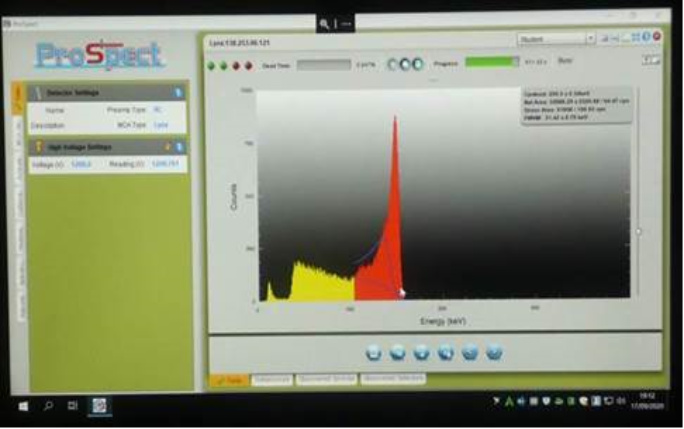Gamma-rays in your living room

With the ongoing COVID-19 pandemic, remote teaching and learning will be needed for the new academic year which is almost upon us. Lectures will be replaced by video and other online content on the university’s new CANVAS platform – but what about practicals?
A Physics degree requires a fair fraction of experimental work carried out in our laboratories. But with social distancing and limited occupation - how can this be achieved?
In the CTL Radiation Lab it is now possible to remotely access a computer and then connect to and control one of its detectors. The figure below shows a screenshot taken from a laptop that was remotely connected to the CTL lab. This allows to collect a gamma-ray spectrum from the comfort of one’s living room or study! Remote experiments will form an important aspect of our teaching provision in the upcoming winter term – more details will be communicated directly via the respective modules.
In our radiation labs, we typically have 40 students in the lab - which lasts a whole day - plus about 5 demonstrators and technicians. With social distancing this will be cut to 10 students. In other larger labs, we would sometimes have up to 150 students per session, which will now be cut to 20 students per bubble. Across our study years, we will sometimes run labs on campus multiple times so that each bubble can carry out their experiments, but in other cases, remote connections will be used to provide equipment access.
This new scheme allowing remote access to computers in the lab and hence also control of various experiments will allow students to remotely record data and analyse it offline without actually coming in to the lab. This blended mix of lab activities will ensure that our students will build up a deep understanding of the underlying physics - a key element in all of our teaching.